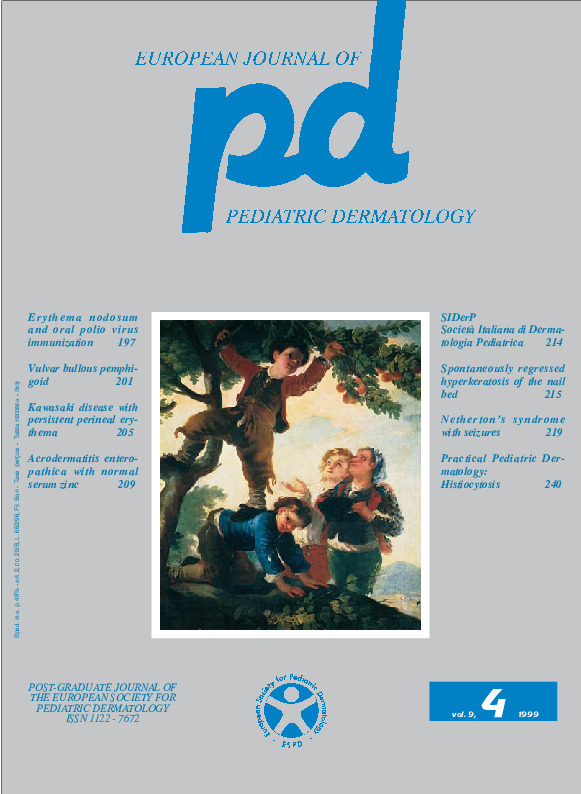Histiocytosis.
Downloads
How to Cite
Bonifazi E., Ciampo L. 1999. Histiocytosis. Eur. J. Pediat. Dermatol. 9 (4): T417-T432.
pp. T417-T432
Abstract
Histiocytosis is the most frequent infantile proliferation after mastocytosis. Histiocytosis is due to the proliferation of the histiocyte. From the undifferentiated histiocyte derive two more differentiated cells, namely the monocyte-macrophage and the Langerhans cell. This is why there are two types of histiocytosis, namely non-Langerhans histiocytosis, which is due to the proliferation of monocytes-macrophages, and Langerhans cell histiocytosis. Similarly to mastocytosis and all the proliferations of the first months of life, the clinical spectrum and prognosis of histiocytosis is very wide, ranging from an isolated lesion of the skin or other organs to the generalized involvement of the skin, till the multisystem involvement of the organism. The prognosis is also extremely variable, ranging from the spontaneous regression within months or years to the death in a few weeks. The biological significance of histiocytosis is under discussion. According to some authors, histiocytosis is a self-healing, reactive, hyperplastic proliferation, whereas other authors believe that it is a malignant, potentially lethal neoplastic process.We are treating only the most frequent forms in childhood of this extremely complex chapter, namely juvenile xanthogranuloma and cephalic histiocytosis among the non Langerhans histiocytoses and finally Langerhans cell histiocytosis.
Keywords
Histiocytosis

